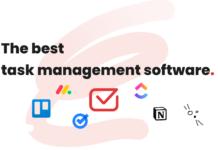
As business leaders continue seeking deeper insights into the overall development and sentiments within the workforce, the demand for HR analytics is increasing day by day. The utilization of the right IT system is crucial to obtaining the most out of the existing workforce. Therefore, it is essential to choose the right people analytics software or tool for your organization. Let us know how!
Without the right people analytics tool for your business, your organization might not operate as smoothly as it is capable of. People analytics software -also referred to as talent or HR analytics tools, are detailed analytics helping executives and managers ensure decisions about the existing workforce or employees. Therefore, using the right HR analytics tools can ensure that business operations run seamlessly.
Importance of People Analytics Tools
With the ongoing pandemic disrupting every aspect of modern businesses, it has become crucial for HR leaders and business executives to ensure decisions based on relevant data. People analytics, therefore, has become an indispensable necessity in the modern business era.
Organizations continue making the rapid shift towards data-driven decision-making. In such a scenario, advanced people analytics solutions play a vital role in delivering strategic value to businesses. An all-new focus on feature-rich people analytics software solutions is gaining impetus with the advent of cloud-based analytics. Human Resources departments are leveraging data to good use while driving ample business value, improving retention, hiring strategies, overall growth, and ensuring diversity. Ultimately, HR providers are capable of ensuring powerful changes within the existing workforce by analyzing insights obtained from data.
Things to Consider While Choosing the Best People Analytics Tools
1. Understand Your Business and Ask the Right Questions
One of the most common mistakes while choosing any software or tool is to look at technology in isolation. It is crucial to acknowledge the end goal of leveraging a people analytics tool. It should be aimed at driving crucial decision-making contributing to the overall growth of the organization. Therefore, it is important to understand the entire business and its unique requirements.
It is also vital to focus on questions that are related to the performance of the HR specifications before the adoption of the new tool. It helps in grounding the implementation of the tool in a strict business case. For instance, in case a business is focused on concerns like the overall turnover, whether or not it is offering equal pay, and so more, it might want to focus on tools that are specialized in delivering insights into relevant workforce data throughout the entire employee lifecycle.
2. Understand Your Data and IT Landscape
Businesses should aim at creating a detailed overview of the respective IT landscape. It will help in saving ample time. This is because some organizations can leverage existing analytics tools.
Moreover, a holistic approach toward the IT systems of the business will ensure cross-functional analyses out of multiple sources. It implies that finance, sales, and HR data can be directly used for answering questions related to sales results and employee engagement.
While sharing tools with other organizations, it is imperative for you to ensure proper authorization governance. It should be aimed toward protecting the data privacy of employees. Some businesses will exercise strict IT policies to significantly influence the choices made available to departments of the organization.
In addition to this, organizations should also consider whether or not the new tools are capable of supporting them with improvements related to the overall data quality. Some tools might feature business rules for flagging data inconsistencies and tracking data incompleteness.
3. Understand the Users and Consumers
Organizations should identify specific roles to analyze and process data. They should also emphasize identifying the consumers throughout the organization. Businesses should differentiate users from consumers.
An organization might realize that it is best to have the workforce in subsequent IT teams for performing in-depth data analyses. At the same time, an organization can also feature a dedicated people analytics expertise center for processing and analyzing existing data. Lastly, the organization can feature end users -like a business manager or HR manager, for directly analyzing data from the people analytics tools. It helps in ensuring reliable quality control before the consumption of HR analytics.
4. Analyze Time & Budget
Organizations should also look into the aspects of time and budget. The important question is when does the organization require going live with the people analytics tool. An insight into this question will help in analyzing crucial time available for developing and implementing a particular tool, gathering data, testing results, and training end users.
For instance, tools featuring plug-and-play traits are quite easy to implement. However, in most cases, they will not allow the end users to take total control of the analytics. This is because analyses tend to be structured as well as fixed by vendors of the specific tools. This implies that if there is the availability of more time for creating the setup of HR analytics, some organizations might prefer starting from scratch. Those having less time to work will go with the first option.
In addition to this, organizations should be aware of the total costs associated with the implementation of the tools. Costs should also be analyzed on the use and maintenance of the data tools. Organizations should ensure that the budget they have has ample room for additional features, hiring external expertise, and storage. Organizations should think about whether or not they should invest a significant part of the budget during the implementation phase.
Conclusion
As organizations continue expanding and improving the scope of the talent management processes, it is important to know about productivity, financial impact, and effectiveness of the respective HR actions. Organizations should seek services from reliable HR talent management service providers allowing them to gain deeper insights into thorough data with the help of the right people analytics tools. Like most other business operations, people analytics tools will require a specific direction for ensuring effective execution. Make the most of professional services.








